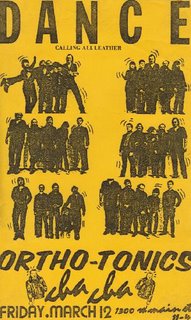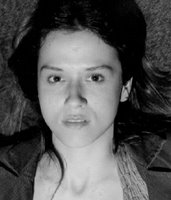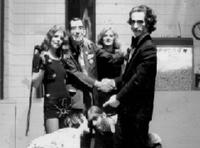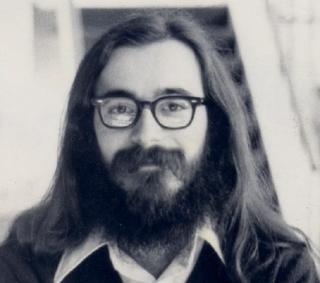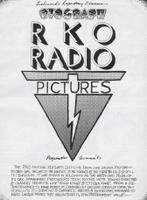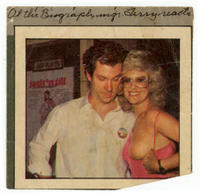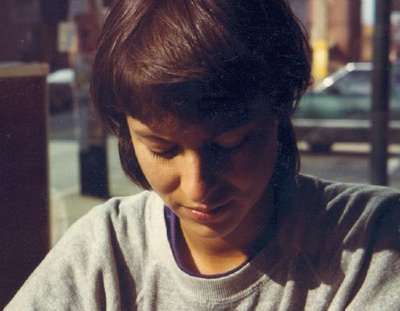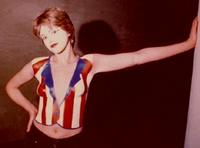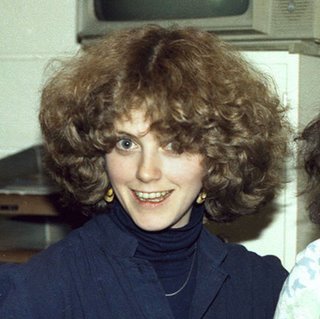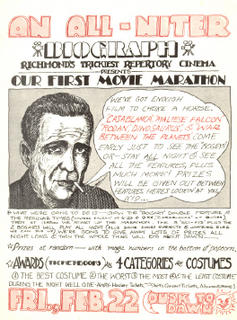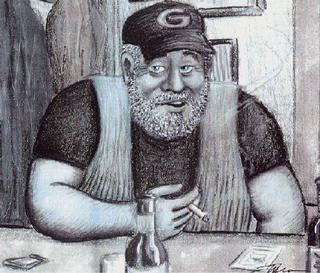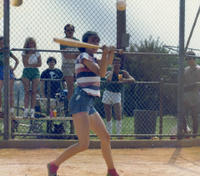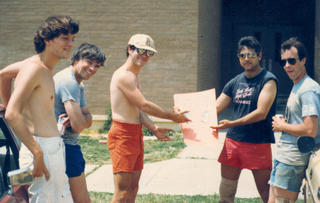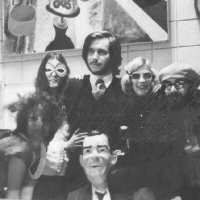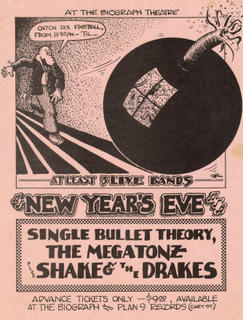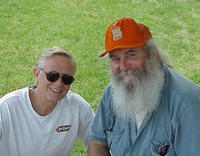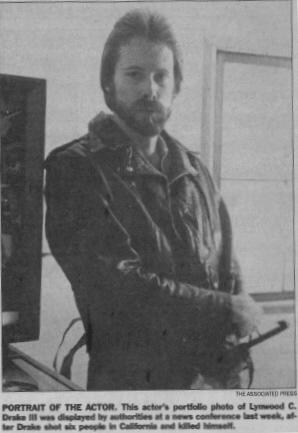
On Nov. 8, 1992, the revenge-driven crime spree ended as the man I remembered as Drake the Flake blew out his brains with a .32 caliber revolver. In the 11 hours before taking his own life Woody Drake had shot and killed six people, wounded a seventh and beaten a former landlady with a blackjack.
It had been over 20 years since I saw him last. It was in the lobby of the Biograph Theatre.
It should come as no surprise to most film buffs that sometimes there is a dark side to the business of doing business after dark. While some saw the Biograph (1972-87) as a beacon in the night, for others it was a place to hide out from a sad reality. Like any business, sometimes things just went wrong.
Customers could be difficult every now and then, especially at midnight shows. There were crazy street people who would sometimes cause trouble. Although nearly everyone who worked at the Biograph during my nearly 12-year stint as its manager was on the up-and-up, there were a couple of rotten apples. As I hired both of them, I have to take the blame there. But those are stories for another time.
There was a night someone fired high-powered ammo through one of the back exits into Theatre No. 1. Five bullets came through a back door's two quarter-inch steel plates to splinter seats. Amazingly, no one was hit. It happened just as the crowd was exiting the auditorium, about 11:30 p.m., and it seemed no one even caught on to what was happening.
Later the police were baffled, leaving us to speculate as to why it happened.
A rat died in the Coca-Cola drain once and clogged it up. Not knowing about the rat, and thinking I knew what to do, I poured a powerful drain clearing liquid -- we called it Tampax Dynamite -- into the problem. It wasn't long before a foul-smelling liquid started bubbling and backing up all over the lobby's carpet. A flooding mess ensued that ran everybody out of there on a Saturday night.
Anyway, in the first months of operation at 814 W. Grace St. there was the series of annoyances that led up to Woody Drake being literally thrown out of the Biograph and "banned for life." The photo above -- it was a publicity shot he used to apply for work as an actor -- ran in the Richmond Times-Dispatch on November 16, 1992. What follows are excerpts of a piece I wrote for SLANT a couple of weeks later:
...The November 16th edition of the Richmond Times-Dispatch carried Mark Holmberg's sad and sensational story of Woody Drake. As usual, Holmberg did a good job with a bizarre subject. In case you missed the news: Lynwood Drake, who grew up in Richmond, murdered six people in California on November 8. Then he turned the gun on himself. His tortured suicide note cited revenge as the motive.
An especially troubling aspect of Holmberg's account was that those Richmonders who remembered the 43 year old Drake weren't at all surprised at the startling news. Nor was I. My memory of the man goes back to the early days of the Biograph Theatre (1972). At the time I managed the West Grace Street cinema. So the unpleasant task of dealing with Drake fell to me.
Owing to his talent for nuisance, the staff dubbed him 'Drake the Flake.' Although he resembled many of the hippie-style hustlers of the times, it was his ineptness at putting over the scam that set him apart. Every time he darkened our door there was trouble. If he didn't try to beat us out of the price of admission or popcorn, there would be a problem in the auditorium. And without fail, his ruse would be transparent. Then, when confronted, he'd go into a fit of denial that implied a threat.
Eventually that led to the incident in Shafer Court (on VCU's campus) when he choked a female student, Susan Kuney, who worked at the Biograph.
That evening he showed up at the theater to see the movie, just like nothing had happened. Shoving his way past those in line, he demanded to be admitted next. An argument ensued that became the last straw. Drake the Flake was physically removed from the building, tossed onto Grace Street, and banned from the Biograph for life.
The next day, Drake made his final appearance at the Biograph. He ran in through the lobby's exit doors and issued a finger-pointing death threat to your narrator. Although I tried to act unruffled by the incident, it made me more than a little uncomfortable. In spite of the anger of his words, there was an emptiness in his eyes. In that moment he had pulled me into his world. It was scary and memorable.
Using a fine turn of phrase, Holmberg suggested that, "Whatever poisoned the heart of Woody Drake happened in Richmond..."
If you want more evidence of the origins of the poisoning, take the time to look him up in his high school yearbooks (Thomas Jefferson 1967/68). Pay particular attention to the odd expression in his eyes. Looking at Drake’s old yearbook photos reminded me of a line in the movie 'Silence of the Lambs.' In reference to the serial-killer who was being sought by the FBI throughout the film, Dr. Lechter (a psychiatrist turned murderer himself) tells an investigator that such a man is not born; he is created.
There is no doubt in my mind. Someone close to Lynwood Drake III, when he was a child, systematically destroyed his soul. So while we can avert our eyes from the painful truth, we basically know where the poison is administered to the Woody Drakes of the world.
Yes, we do. The assembly line for such monsters runs through their homes. Apparently he was always a problem to those around him. The story goes that Woody Drake liked to beat up women. After I threw him out of the Biograph and he disappeared, several people told us stories about various females he had hurt. No doubt, there was a reason why he hated women.
Shortly before Drake ended his wretched life, he woke up a 60-year-old woman by smacking her in the head with a blackjack. She scrambled to hide under her bed and lived to tell the story.
The news stories reported that Drake, who always had fancied himself as an actor, had made up a long list of people he intended to pay back. The man who had a childhood straight out of a horror movie wore theatrical grease paint on his face when he committed his murders. As the cops were closing in on him Drake punched his own ticket to hell.
-- 30 --
 It's been a while since any new softball photos were put up, so to respond to the requests for more of such nostalgia, here's another batch from the days of the Fan District Softball League. Above is a random gathering of Back Door Bombers, and others -- such as Darryl Cohen (drinking the beer on the left):
It's been a while since any new softball photos were put up, so to respond to the requests for more of such nostalgia, here's another batch from the days of the Fan District Softball League. Above is a random gathering of Back Door Bombers, and others -- such as Darryl Cohen (drinking the beer on the left): In the above phograph, top row (left-to-right) they are: Karen Smith, Les Smith, Dennis Madigan, Trent Nicholas. Second row: Chuck Wrenn, Gussie Armeniox.
In the above phograph, top row (left-to-right) they are: Karen Smith, Les Smith, Dennis Madigan, Trent Nicholas. Second row: Chuck Wrenn, Gussie Armeniox. The Back Door's nearly-svelte owner John "Big Daddy" Richardson was perhaps more of a "Medium-Well-Done Daddy" in this era. The picture above, as well as the two above it were all shot at John Marshall HS by Danny Brisbane in 1977.
The Back Door's nearly-svelte owner John "Big Daddy" Richardson was perhaps more of a "Medium-Well-Done Daddy" in this era. The picture above, as well as the two above it were all shot at John Marshall HS by Danny Brisbane in 1977. This 1983 team photo of the Biograph Naturals, a group of semi-wily veterans who finished the season at 18-15 and may have surprised themselves by having a winning record, was taken at Chandler Ballfield by David Stover.
This 1983 team photo of the Biograph Naturals, a group of semi-wily veterans who finished the season at 18-15 and may have surprised themselves by having a winning record, was taken at Chandler Ballfield by David Stover. The black and white above was shot at the Fan District League's 1985 All-Star Game at the Columbian Center. On the left in shades without a beard is Artie Probst. His two thirsty buds to the right are the late Fitz Marston and the late Paul Soble. When one recalls the pedal-to-the-metal scene at any of Soble's legendary Christmas parties at the original Floyd Avenue location, Paul and his pal Fitz are missed all the more at this time of year.
The black and white above was shot at the Fan District League's 1985 All-Star Game at the Columbian Center. On the left in shades without a beard is Artie Probst. His two thirsty buds to the right are the late Fitz Marston and the late Paul Soble. When one recalls the pedal-to-the-metal scene at any of Soble's legendary Christmas parties at the original Floyd Avenue location, Paul and his pal Fitz are missed all the more at this time of year. And speaking of Soble, here's a shot of Paul enjoying himself on July 4th as only he could, from the same summer as above. (the last two are from SLANT's first year archives)
And speaking of Soble, here's a shot of Paul enjoying himself on July 4th as only he could, from the same summer as above. (the last two are from SLANT's first year archives)